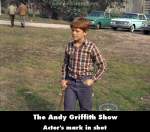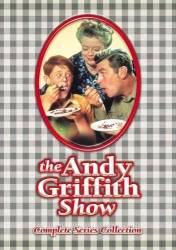Visible crew/equipment: When Clara and Opie first sit down at the piano to begin the piano lesson, note there's nothing on the floor behind them. Then that shot cuts to the end of the lesson as the camera pulls back for a wideshot, and now there are two tape marks on the floor near the door in the area where Opie and Aunt Bee will be standing shortly. (00:04:15)
Visible crew/equipment: When Flip pays a visit to the Taylors, he and Andy walk over to Opie, and the actors' two tape marks are visible on the floor between Opie and Flip. (00:21:05)

Continuity mistake: When Opie surprises Andy by telling him that he wants to take piano lessons with Clara, he heads to the piano to play what he already knows, and when Opie plays Chopsticks on the piano he's wearing a different shirt.

Visible crew/equipment: After the boys meet Flip Conroy and talk about the football team, when they all disperse and Opie starts walking away the T-mark is visible on the ground.






Answer: It was a joke. They were supposed to be dumb hillbillies.
Both. According to later interviews with both Andy and the Dillards band (the real name of the band that played the parts of the Darling children, of which Charlene (Maggie Peterson - Mancuso was also a member) the reason the Darling boys never had any lines was because they would've had to have been paid if they spoke. In return for appearing without lines or pay, Andy promised to get as much of their music onto the show as possible which, he did. This obviously gave them a lot of exposure.